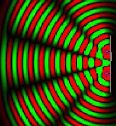 A custom reverb can add a unique signature to your recordings. And since practically every space reverberates, a home made reverb often requires no more than a speaker, and microphone to capture reflected sound. Understandably, then, reverb units are popular do-it-yourself projects for musicians and recording engineers.
A custom reverb can add a unique signature to your recordings. And since practically every space reverberates, a home made reverb often requires no more than a speaker, and microphone to capture reflected sound. Understandably, then, reverb units are popular do-it-yourself projects for musicians and recording engineers.
Spring and plate reverbs are the easiest designs to implement. Though depending on your skill with a soldering iron, you can also build an electronic reverb. And capturing the natural ambiance of a space, with a speaker and mic, offers almost unlimited possibilities.
Here’s a collection of links to the Web’s best plans for these homemade reverbs:
Spring Reverbs:
- The most comprehensive design I’ve seen: The Slinky Spring Reverb.
- Some variations on the Slinky design, including a stereo spring reverb.
- A cabinet-style spring reverb for guitar.
- The $2 spring reverb, built from a toy echo mic.
- And finally, a no-frills dirt cheap design.
Plate Reverbs:
- The definitive plate reverb design comes from TapeOp magazine.
- A no nonsense approach, from a poster on the electro music forums (copied here because the site is frequently unavailable.):
I got a sheet of steel, about the size of a very large refrigerator, this was about 1 X 2 meters more or less. I built a wooden frame of 2X4s. Two holes were drilled near the top of the plate and it was suspended to hang on two wooden dowels through rubber grommets.
I took an old 12″ speaker and cut the metal cage off of it and trimmed the speaker cone so as to only have about 1″ from the driver. Then I built a wooden cross member across the plate but not touching it to hold this speaker and glued the shortened cone to the plate. I attached a contact microphone to the plate. I drove the plate through a 50 watt amplifier connected to the speaker (glued to the plate) and took the signal from the contact mic. The placement of the mic is determined by experimentation. I built a simple wet/dry mixer. In those days people built their own circuits. Today I’d buy the mixer.
This entire apparatus was in the basement below my studio.
Electronic Reverbs:
- A collection of schematics for various reverbs.
- Many effects pedal schematics, including a few reverbs.
Natural reverbs:
- Electronic Musician’s Keeping It Real article describes some great approaches to capturing natural reverberance (including a washer or dryer, and an old Gibson guitar.)
- Upload an audio file to Silophone, and hear how it sounds played through speakers in a grain silo.

8 comments
Trackback URI Comments feed for this article
This is great!
Are you going to build some of these?
Sorry Jon, I missed this comment before.
I’d love to try the Slinky ‘verb, but to date, I’ve only played around with the “speaker and mic in an interesting room” approach. (I have an all-concrete room in my basement that sounds … cavernous.)
Do you guys have a plate verb at M/W?
Great ideas. Thanks for sharing such creative ways to make do with what we have or what we can afford. I really like the slinky ‘verb and think I’ll give that a try. The link you provided for the hot pink dollar store microphone for reverb is the first I’ve ever seen. Awesome job.
Nice blog, looking to get in contact with whoever runs this…
Thanks for the great ideas, I have been working on using reverb a lot more on my samples it quite hard to master using reverb correctly but it can make some the bass notes really awesome.